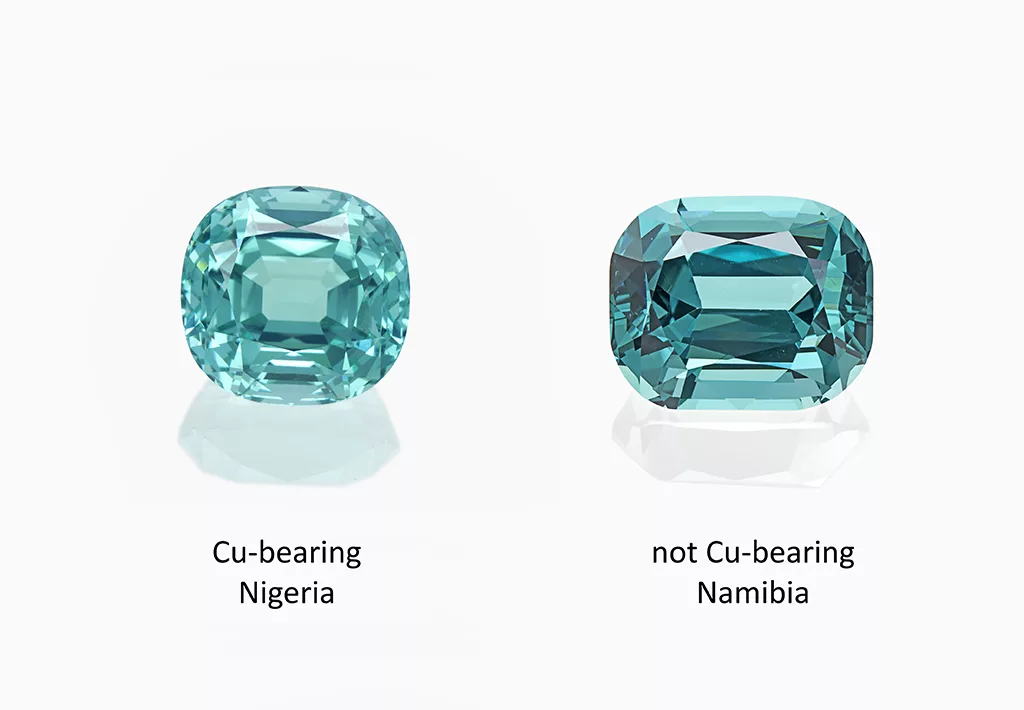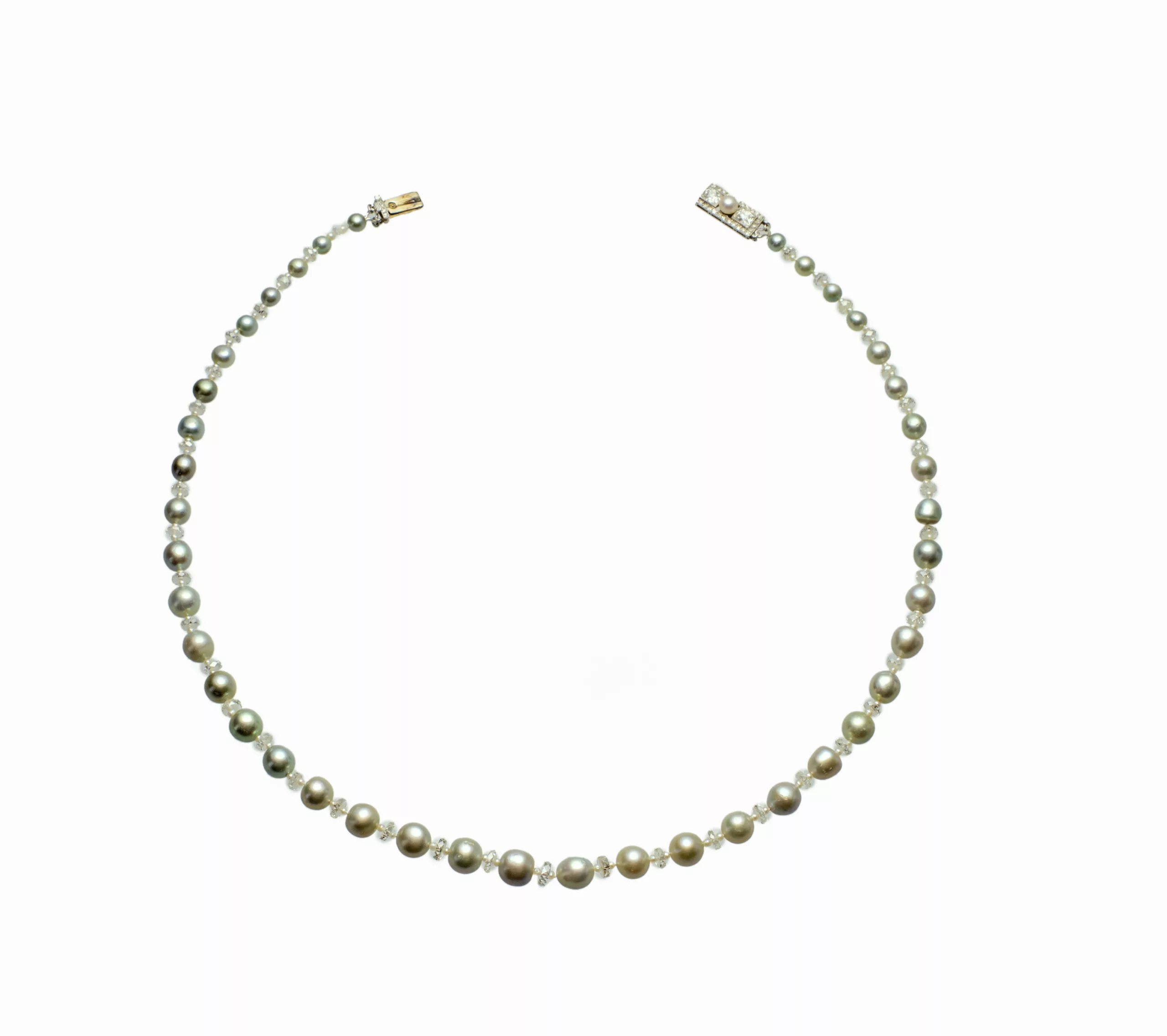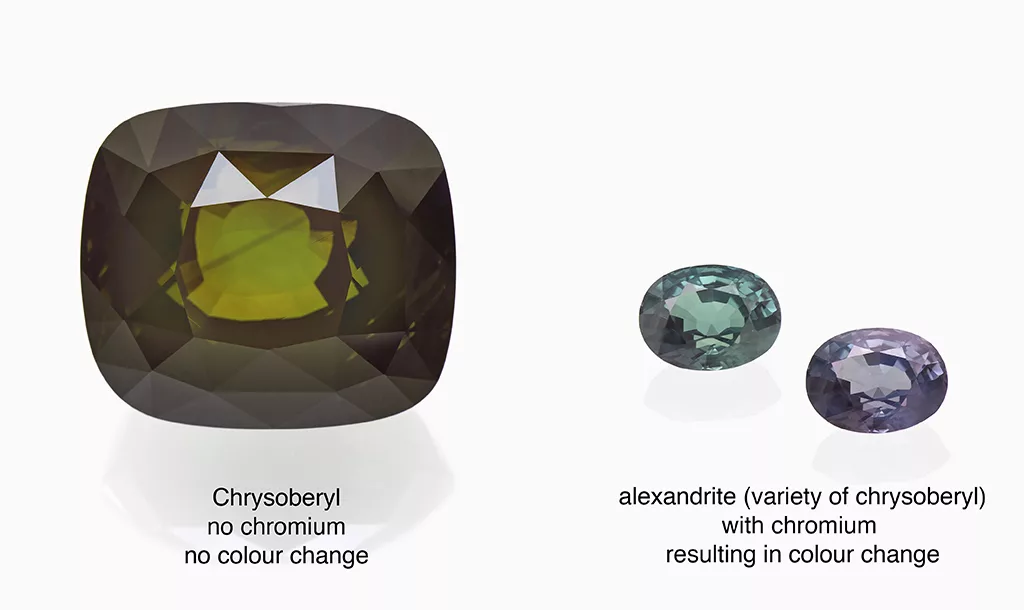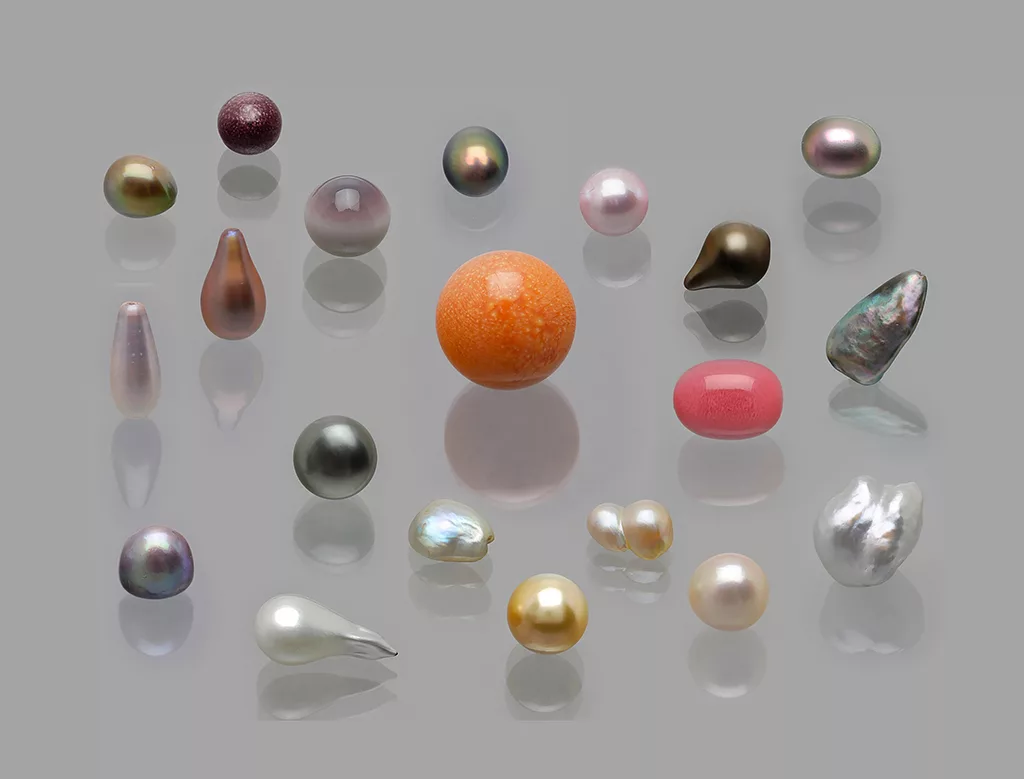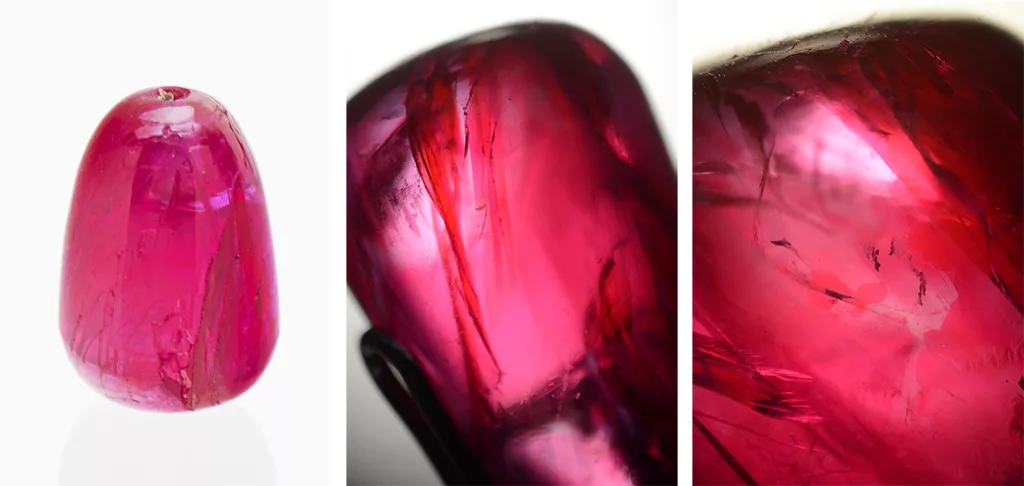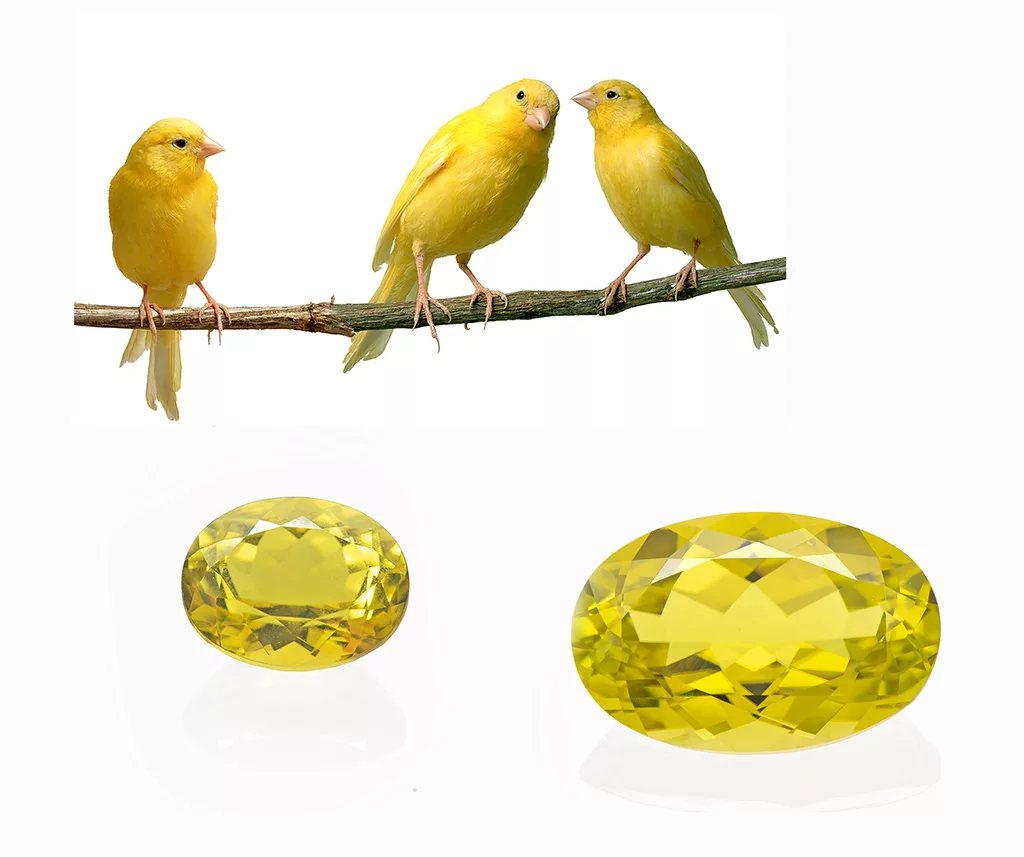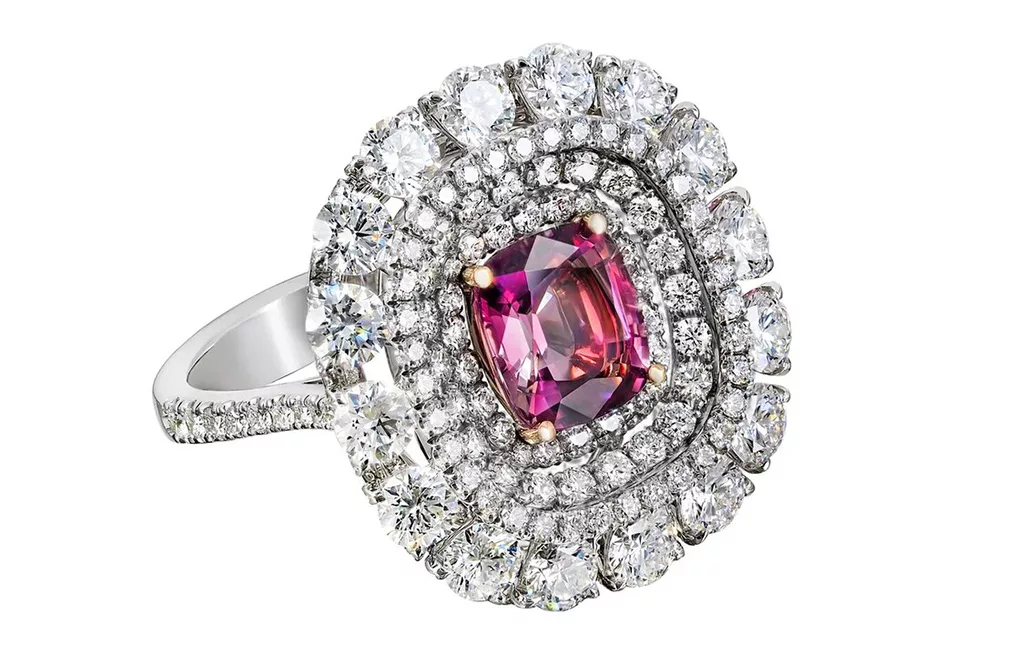New copper-bearing tourmalines from Nigeria
Copper-bearing tourmaline from Nigeria is known in the trade since about two decades (Milisenda 2001, Henricus, 2001; Smith et al., 2001; Zang et al., 2001). The first reported material from Nigeria was rather of aquamarine- to amethyst-like colours, but shortly after it was followed by a limited and sporadic p
Natural pearls dyed green
The body colour of pearls is normally related to the presence of natural colour pigments produced by the mollusc during pearl formation. Another option is to colour pearls artificially, with dyeing being the most readily available method. Often applied to rather low-quality freshwater cultured pearls, these tre
To be, or not to be, that is the question: chrysoberyl versus alexandrite
The mineral chrysoberyl BeAl₂O₄ is a highly appreciated gemstone due to its rarity, brilliance, and beauty and comes in attractive colours commonly ranging from colourless (chemically pure) to yellow, yellowish green, green, and brownish green to dark brown, mostly related to the presence of iron in its cry
DNA fingerprinting and age dating of pearls and corals at SSEF
Pearl testing was long limited to determining whether a pearl is natural or cultured, and whether a pearl has been treated or not. As we have considerably invested in pearl research in recent years, we have achieved significant breakthroughs, namely DNA fingerprinting for species identification and radiocarbon
A new led daylight source for diamond colour grading
In 2020, a novel light source for the colour grading of diamonds was developed in a collaboration between SSEF and the Department of Physics, University of Basel (see Figure 1). In contrast to many of the models on the market, the new light source uses state-of-the-art LED (Light Emitting Diode) lights instead
Dyed corundum from Burma
by Dr. M.S. Krzemnicki, first published in Facette 27 (June 2021) It cannot be repeated often enough: any gemstone which contains fissures is prone to be treated with fissure filling substances, either by using a colourless or coloured substances (e.g. oil). Even when the stone comes from a famed mini
Canary tourmaline from Zambia
by Dr. M.S. Krzemnicki, first published in Facette 27 (June 2021) Tourmaline is a mineral group of complex boro-silicates and is well known to produce gemstones in a wide range of beautiful colours. A specifically attractive variety is vivid yellow elbaite tourmaline, which owes its colour to manganes
A gemmologist’s delight: poudretteite, musgravite, taaffeite, and grandidierite
by Dr. M.S. Krzemnicki, first published in Facette 27 (June 2021) In recent months, the SSEF received again a number of very rare collector stones for testing. These included poudretteite, musgravite, taaffeite, and grandidierite of exceptional quality. Poudretteite, ideally KNa2B3Si12O30, is a very r
Two exceptional asteriated diamonds
by Dr. L. Speich & J.-P. Chalain, first published in Facette 27 (June 2021) Recently, SSEF received two so-called asteriated diamonds for authentication. Asteriated diamonds are rare and highly prized amongst collectors for their beautiful and unique appearance. The two stones received in our lab
Heated ruby from Mong Hsu (Myanmar) with blue zone
Rubies from Mong Hsu, located about 250 km southeast of the Mogok Stone Tract, entered the gem trade in the early 1990s. Since this time the Mong Hsu mines remain an important source for Burmese rubies, specifically for stones of smaller sizes (2 ct and below).
